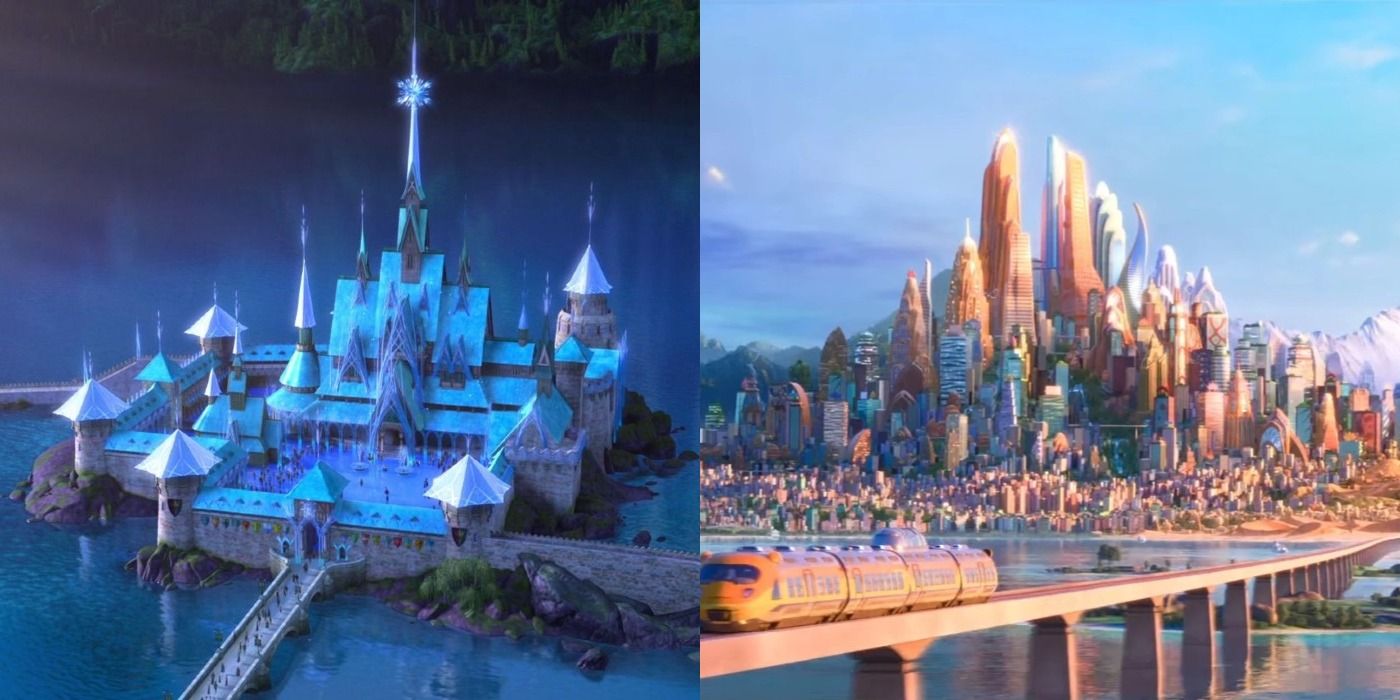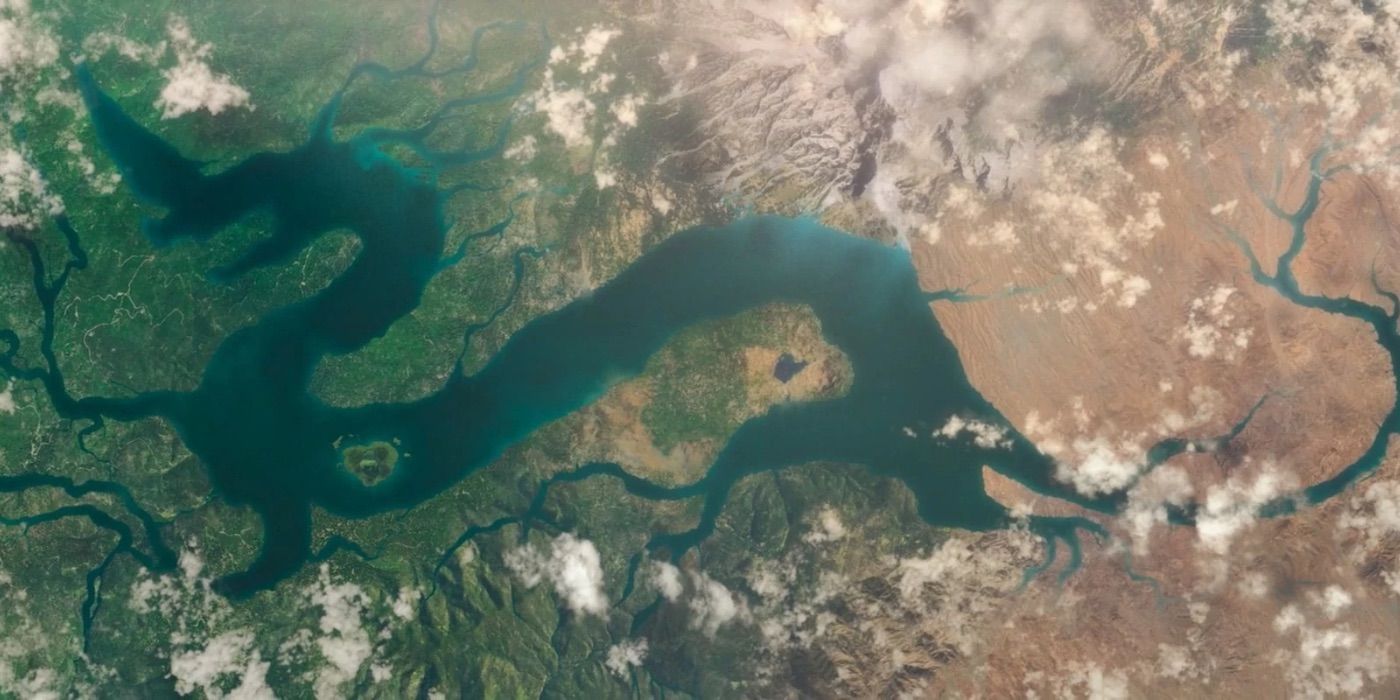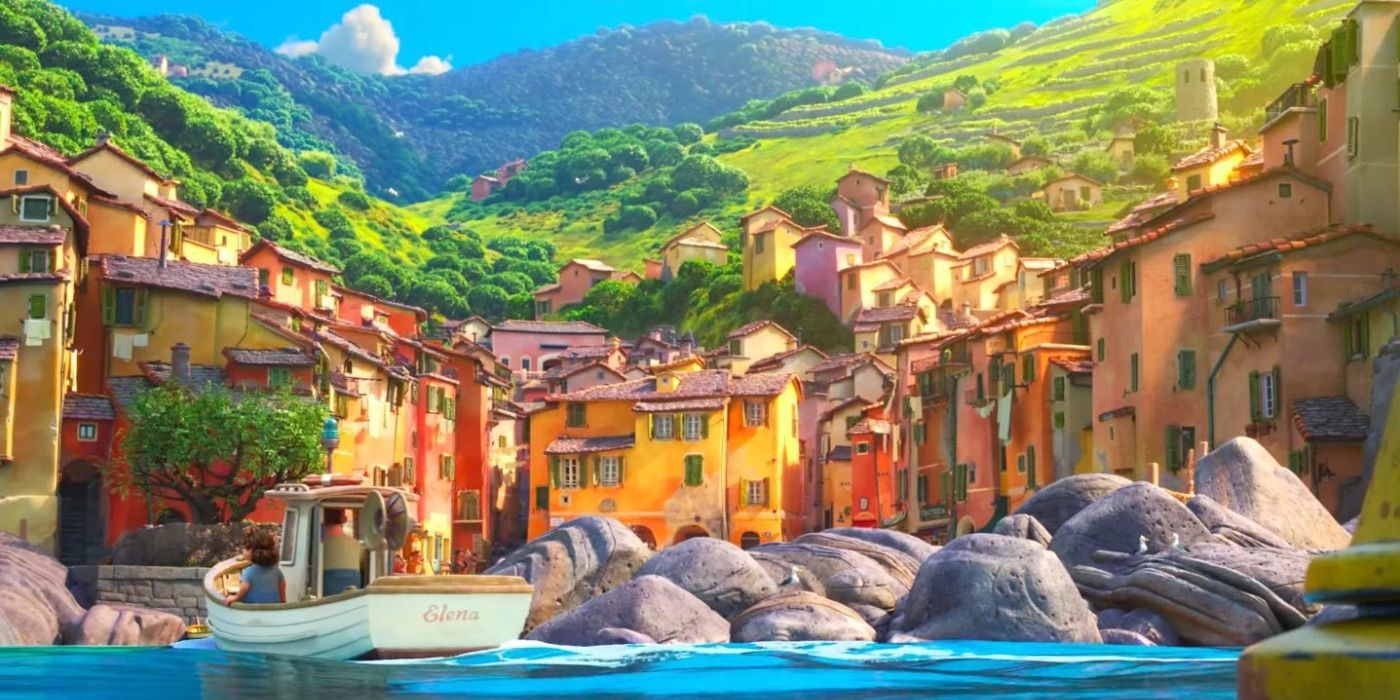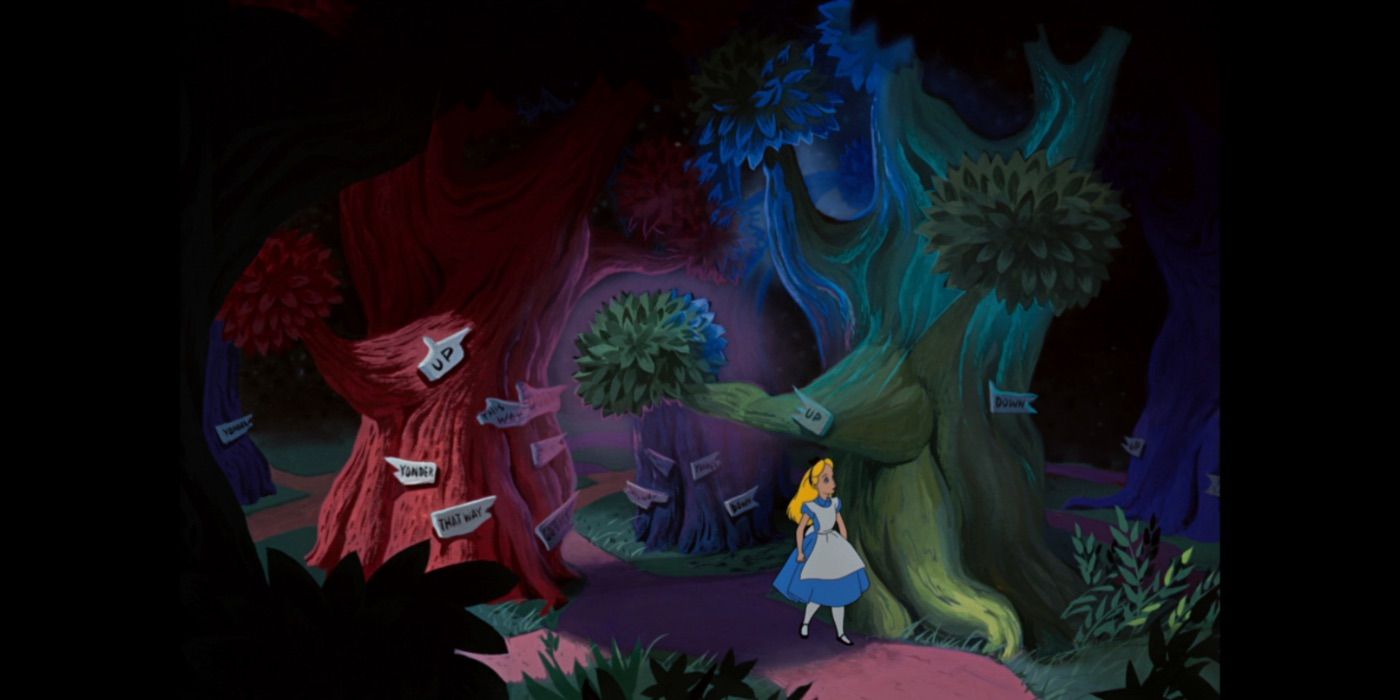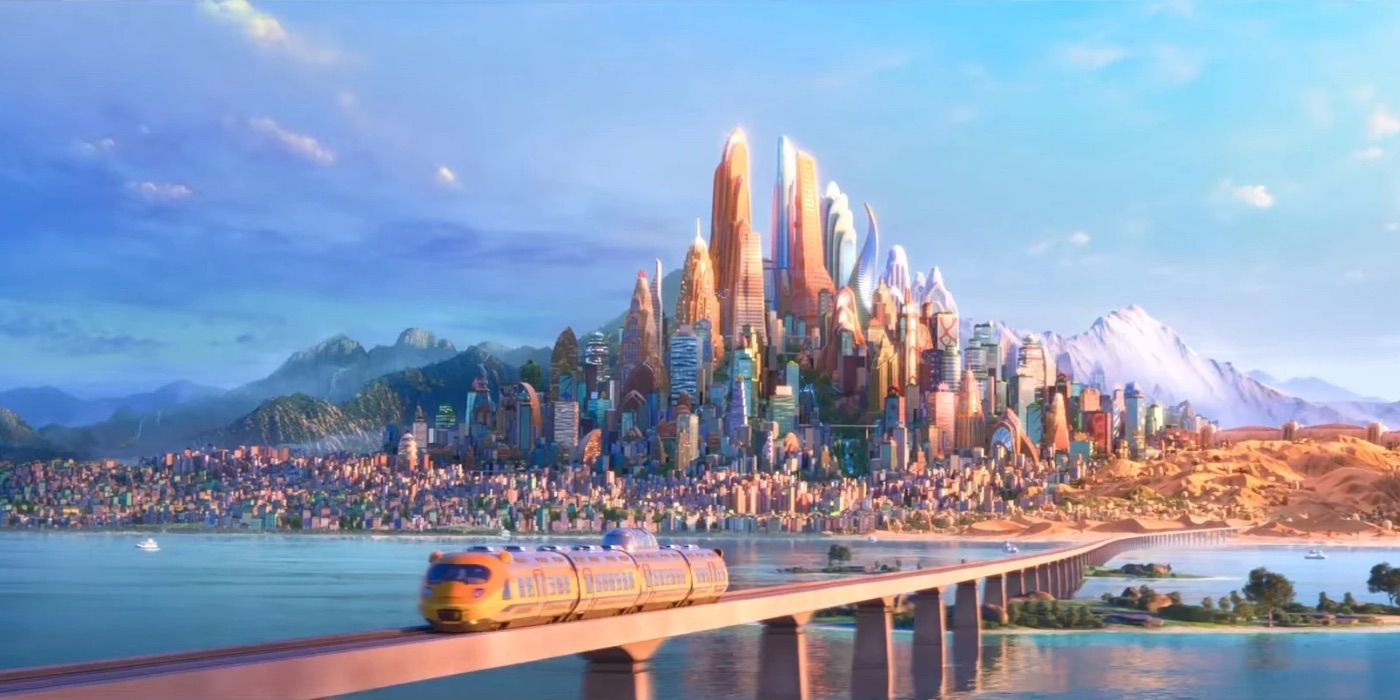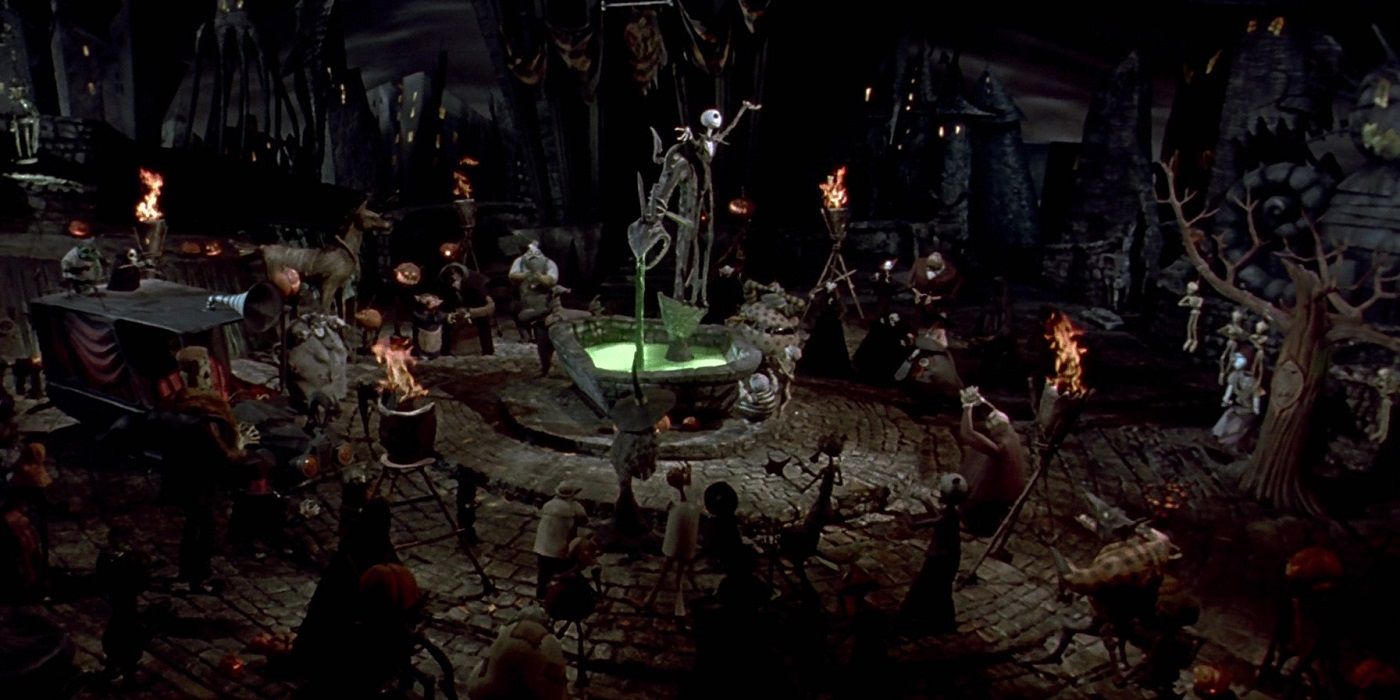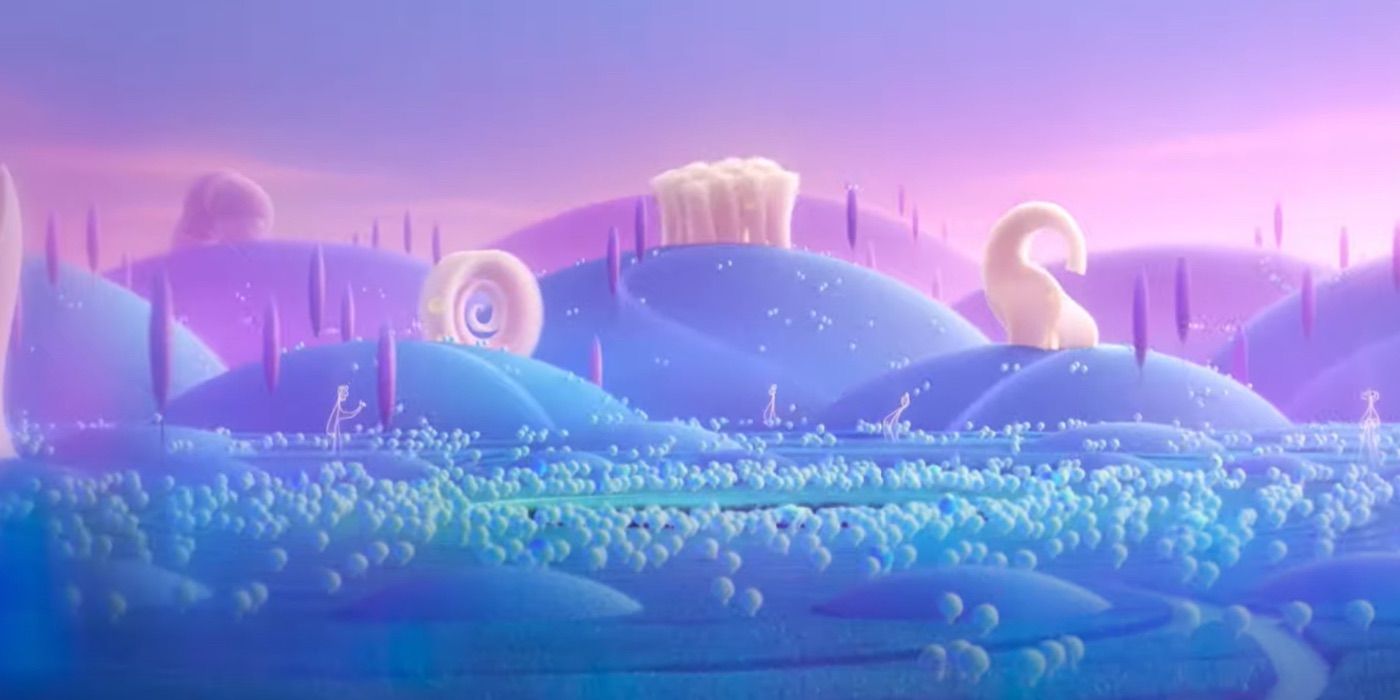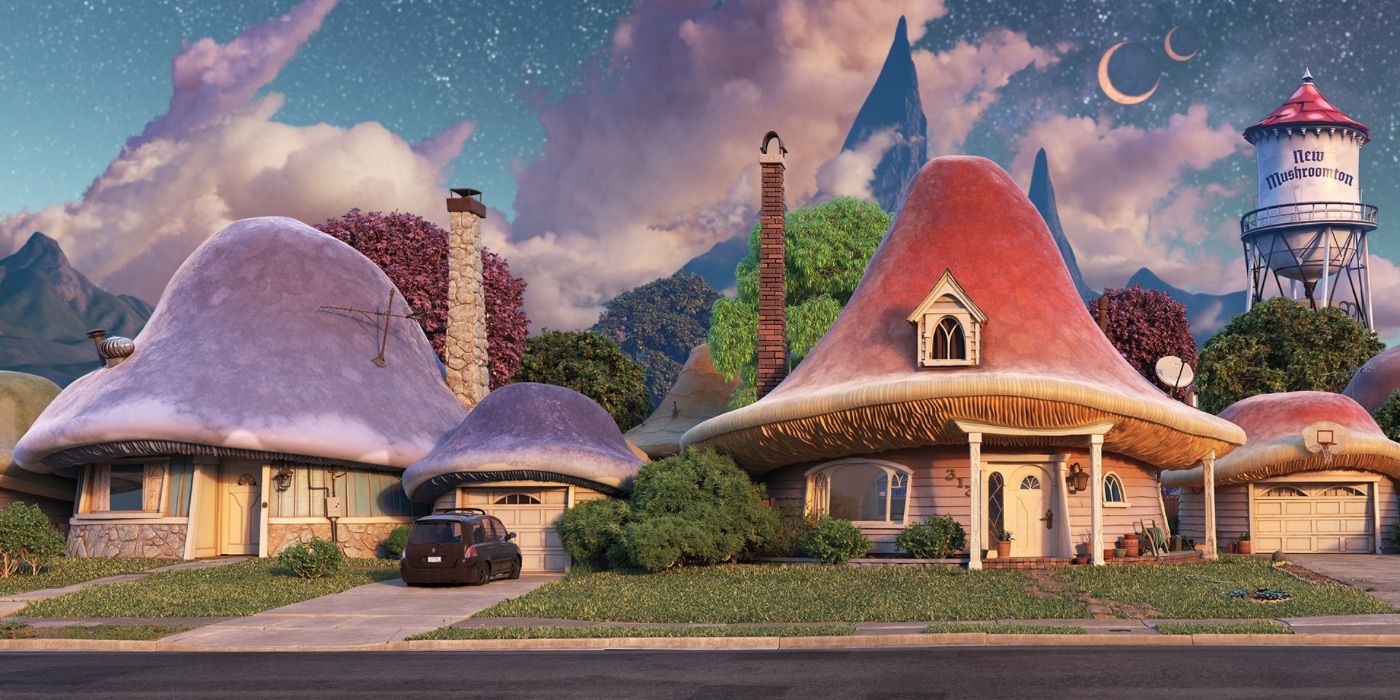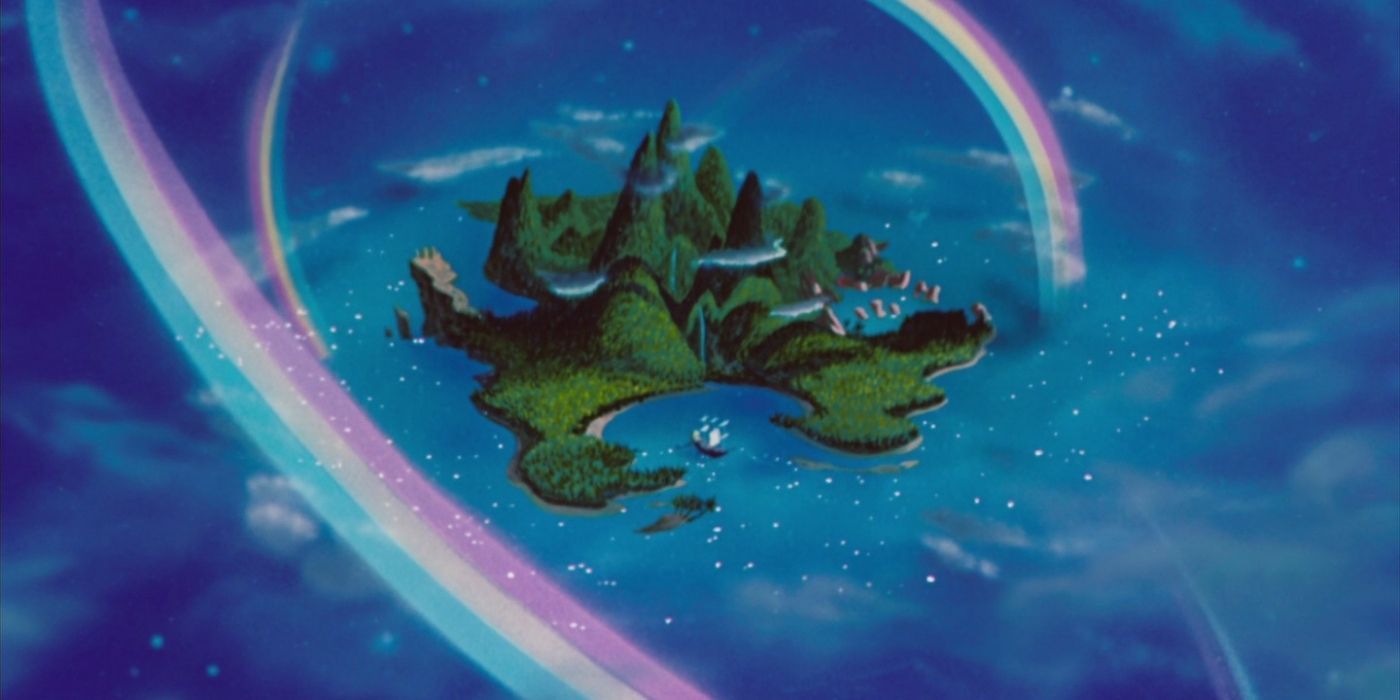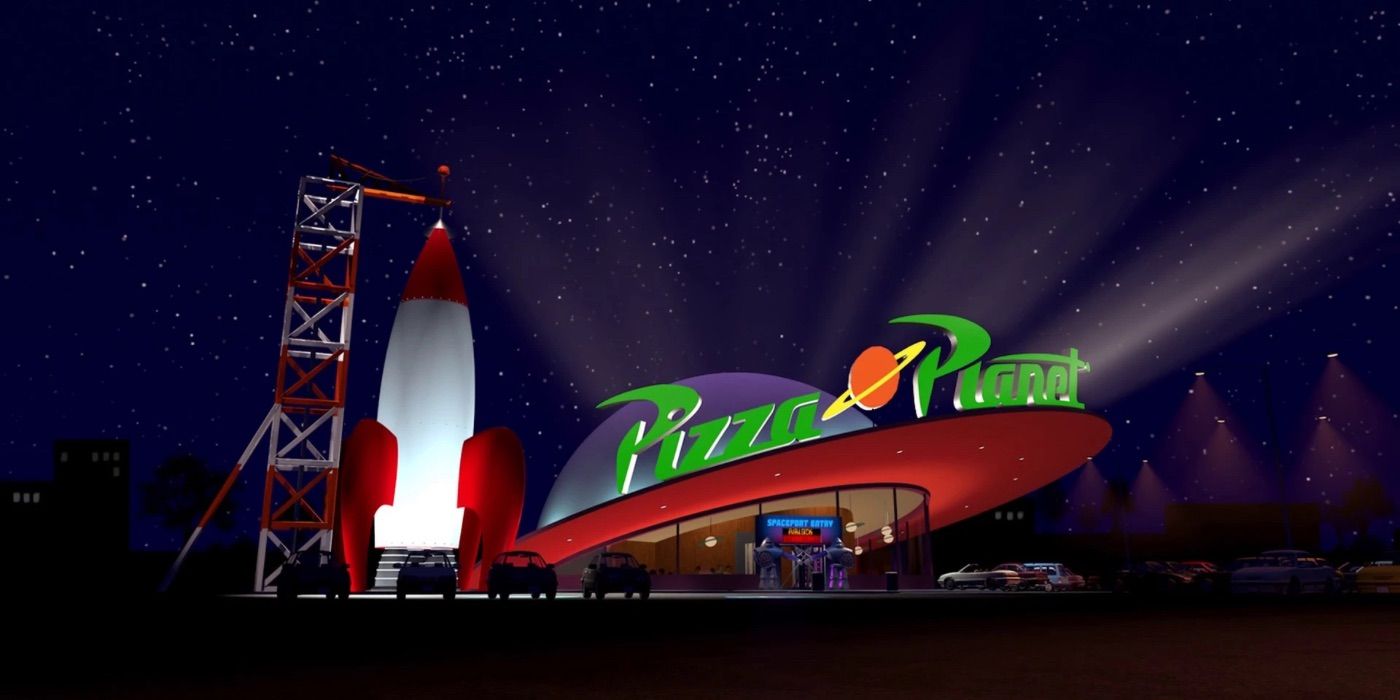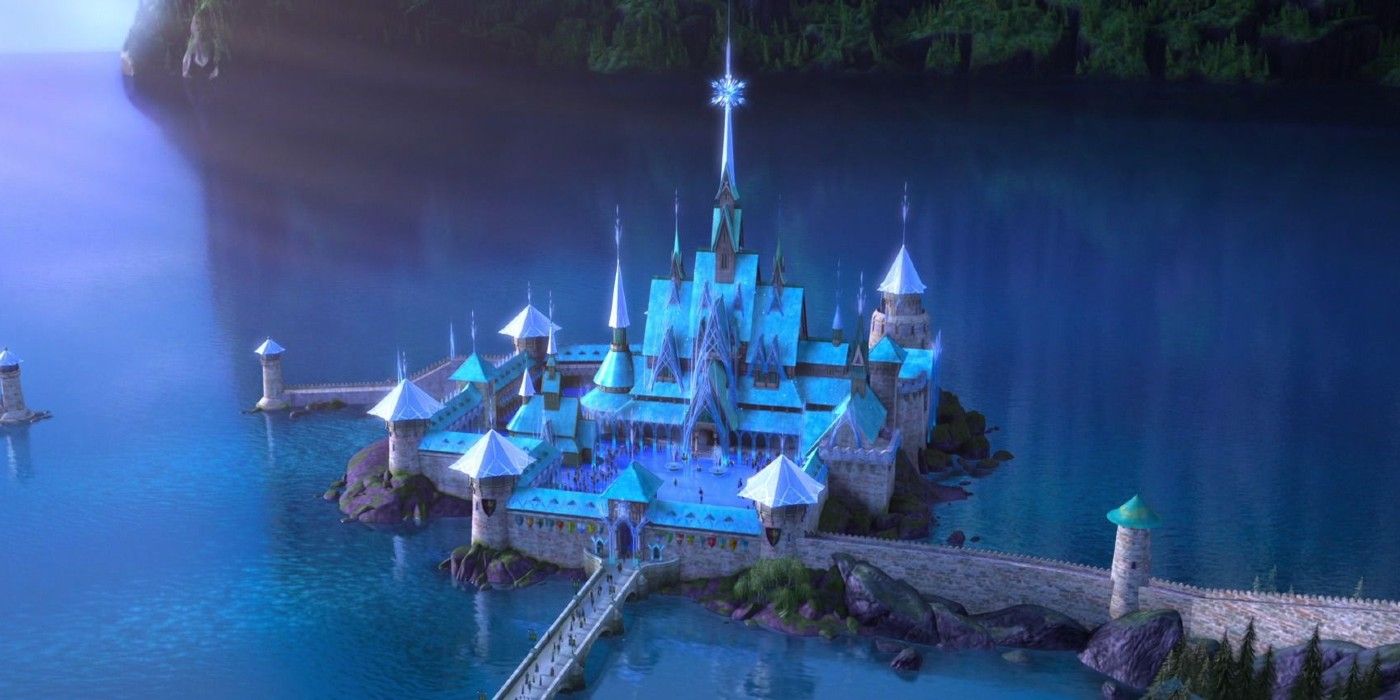Although many Disney movies have settings rooted in reality, from New Orleans in The Princess and the Frog to Paris in The Hunchback of Notre Dame, some of their stories require more fantastical locations that more accurately reflect the story being told.
Whether these fictional locales take inspiration from real-world places or are pure fantasy, the settings of Disney films can be used in order to help inform viewers about a character's backstory, provide a reason for their motivations, or otherwise indicate the kind of story being told. Additionally, these original places can provide a fantastic form of escapism, allowing audiences to get lost in the viewing experience.
Kumandra (Raya And The Last Dragon)
Acting as the sole setting for Raya and the Last Dragon, Kumandra is a Southeast Asian-inspired land split into five kingdoms; Fang, Heart, Tail, Spine, and Talon, each with its own distinct environment. From above, the water that connects these lands resembles a dragon.
As a setting that showcases some of Disney's best magical creatures, from the titular dragon to Raya's pet Tuk Tuk, Kumandra proves itself to be a location full of wonders. It's also vital to the story, as Raya's quest sees her traveling through all of its regions, showcasing both their individuality and what once united them, which further motivates Raya on her journey.
Portorosso (Luca)
Though the coastal town of Portorosso was inspired by similarly structured communities on the Italian Riviera, its sea monster-suspicious culture and the story's undercurrent of magic tips Luca's setting into the realm of fiction.
The best scenes from the movie illuminate the setting of Portorosso to great effect, showcasing its vibrancy as contrasted with Luca's life in the water through gelato shops and brightly colored houses, but its atmosphere can also turn frightening, with the tight-knit community and town's narrow roads proving there's little place for Luca and Alberto to hide if they wish their true identities to remain undiscovered.
Wonderland (Alice In Wonderland)
The Wonderland that Alice stumbles into during Disney's 1951 version of Alice in Wonderland brought many of the iconic visuals from the story's source material to life in ways that remain typical in later adaptations of the story, whether it's Alice's wacky descent down the rabbit hole or the White Rabbit's house.
Wonderland is a perfect example of a setting making a movie what it is, for without it there would be no story. Alice's adventures only truly begin once she is transported and trying to make sense of her new surroundings, made harder by their often contradictory nature. Ultimately a story about befriending the unknown, the eccentric inhabitants of Wonderland mirror their outlandish home.
Zootopia (Zootopia)
Fusing together the trappings of city life with the animal kingdom seems like a difficult task, but the titular city of Zootopia does just that, creating a society where all sorts of animals coexist, but also exploring the problems of a setting that has certain prejudices against those species deemed predators or prey.
The city itself is packed with little details that illustrate how all kinds of animal influences would affect an urban setting, more of which become apparent upon rewatches of the movie. Combining familiar society with unfamiliar inhabitants, Zootopia as a setting works well to settle audiences into its world, allowing the movie to explore themes of fear and prejudice in a way that consequently feels emotionally resonant.
Halloween Town (The Nightmare Before Christmas)
Whether considering The Nightmare Before Christmas a Halloween movie or a Christmas movie, the film's memorable setting undeniably adds to its singular atmosphere. Though the film's Christmas Town is integral to the story, Halloween Town is where most of the action takes place.
The town is full of Easter eggs fans may have missed, and as Jack's home, it is important to understanding his and his community's motivations throughout the narrative. Combining an uncanny creepiness with Jack's growing determination to take on the duties of Christmas, the setting reinforces the movie's story of contrasts and emphasizes why Jack makes the mistakes he does.
The Great Before (Soul)
Soul is a movie that mostly explores philosophical questions, and the dreamy quality of its setting in The Great Before reflects on its thoughtful nature, as a space full of soft shapes in pastel colors.
Given that the film is more focused on internal conflict and expectations than the external, it makes sense that the hazy nature of The Great Before is largely a simple space, giving the characters within it more chance to stand out rather than having to compete with a flashy setting. Additionally, the colors of this space contrast with those on Earth to show how different of an experience the two realms provide.
New Mushroomton (Onward)
The story of Onward begins in New Mushroomton, a town whose populace is made up of a range of fantasy creatures, including elf protagonists Ian and Barley.
The world blends together the tropes of the fantasy genre with modern life and serves to back up the movie's premise, that though magic was once commonplace, developments in technology have left it nearly obsolete. New Mushroomton's combination of cars and centaurs, high school and spells, establish it as a place that's somewhat forgotten its origins, and the story goes on to explore this tension.
Neverland (Peter Pan)
As well as the movie's under-appreciated villain contributing to its popularity, Peter Pan's magical setting in Neverland has become so familiar that its name can be used as a shorthand for escapism and notions of living in eternal childhood.
Disney's 1953 film presents the location of Neverland as a place full of wonder, with mermaids, pirates, and plenty of room to explore, but it also doesn't shy away from showing that though it may seem fantastic to begin with, there are downsides to remaining there, not least because it separates the Darling children from their family.
Pizza Planet (Toy Story)
Although it's only a small part of the setting within the larger plot of Toy Story, Pizza Planet has gained more importance due to its logo's recurring appearance on a Pizza Planet delivery truck often used as an Easter egg in later Disney Pixar movies.
Within the context of Toy Story, though, Pizza Planet is significant as the place where the friendship between Buzz and Woody starts to develop, given that Woody has to rescue Buzz from within one of the restaurant's rocket-themed arcade games. Additionally, it is the origin of fan-favorite alien toys, the Little Green Men.
Arendelle (Frozen)
Amongst older Disney princess movies, the setting has often taken a back seat to a more character-driven story, but more recent entries into the franchise like Frozen have taken place in more fully realized worlds that support their narratives.
The Norwegian-inspired environment of Arendelle and the kingdom's surrounding areas play an important part in establishing the dangers that come with Elsa's ice powers, given the necessity of its climate for bringing in resources and travel. Additionally, Elsa's journey into the wilderness of the mountains parallels her freedom from the expectations put upon her within the kingdom.

